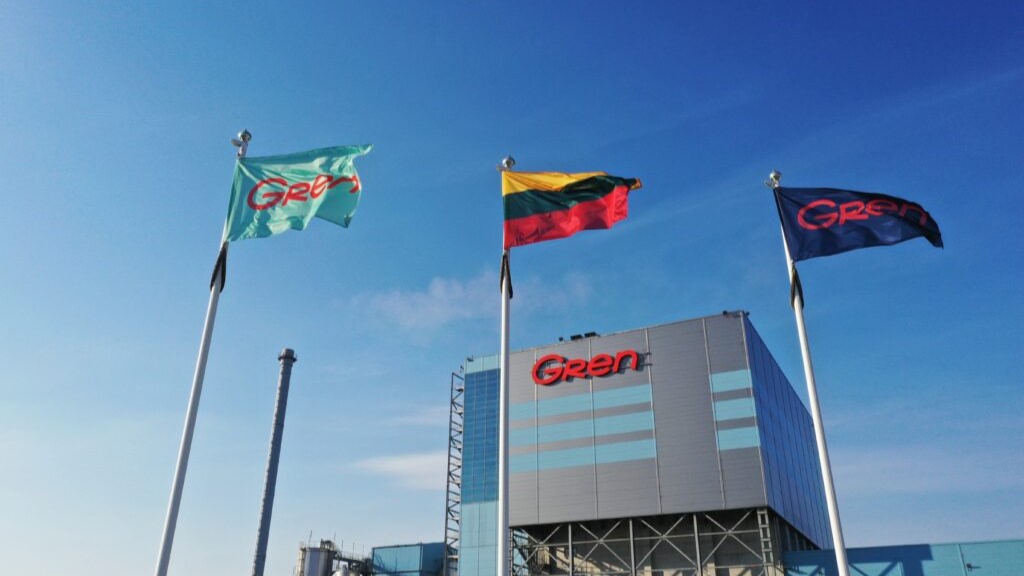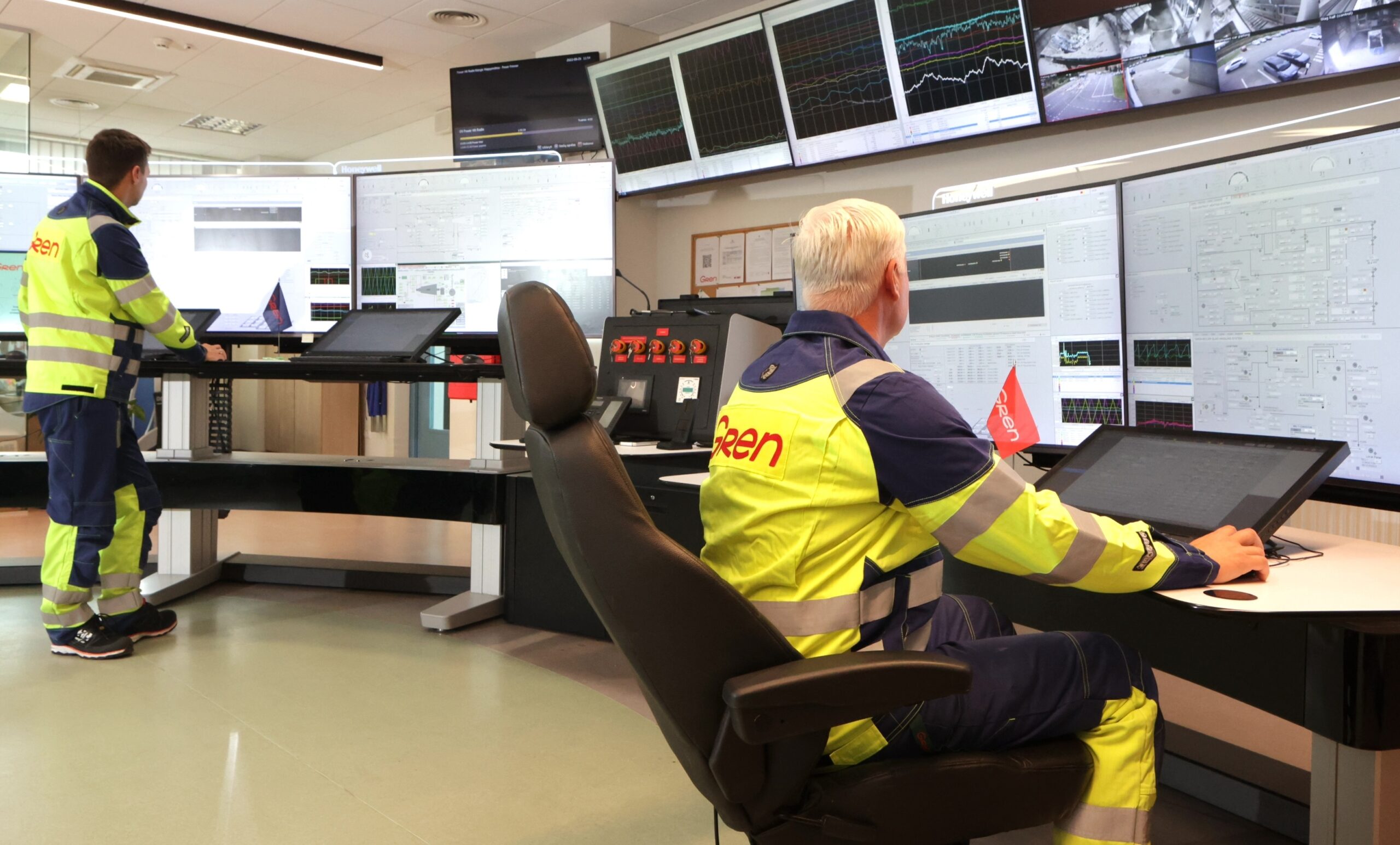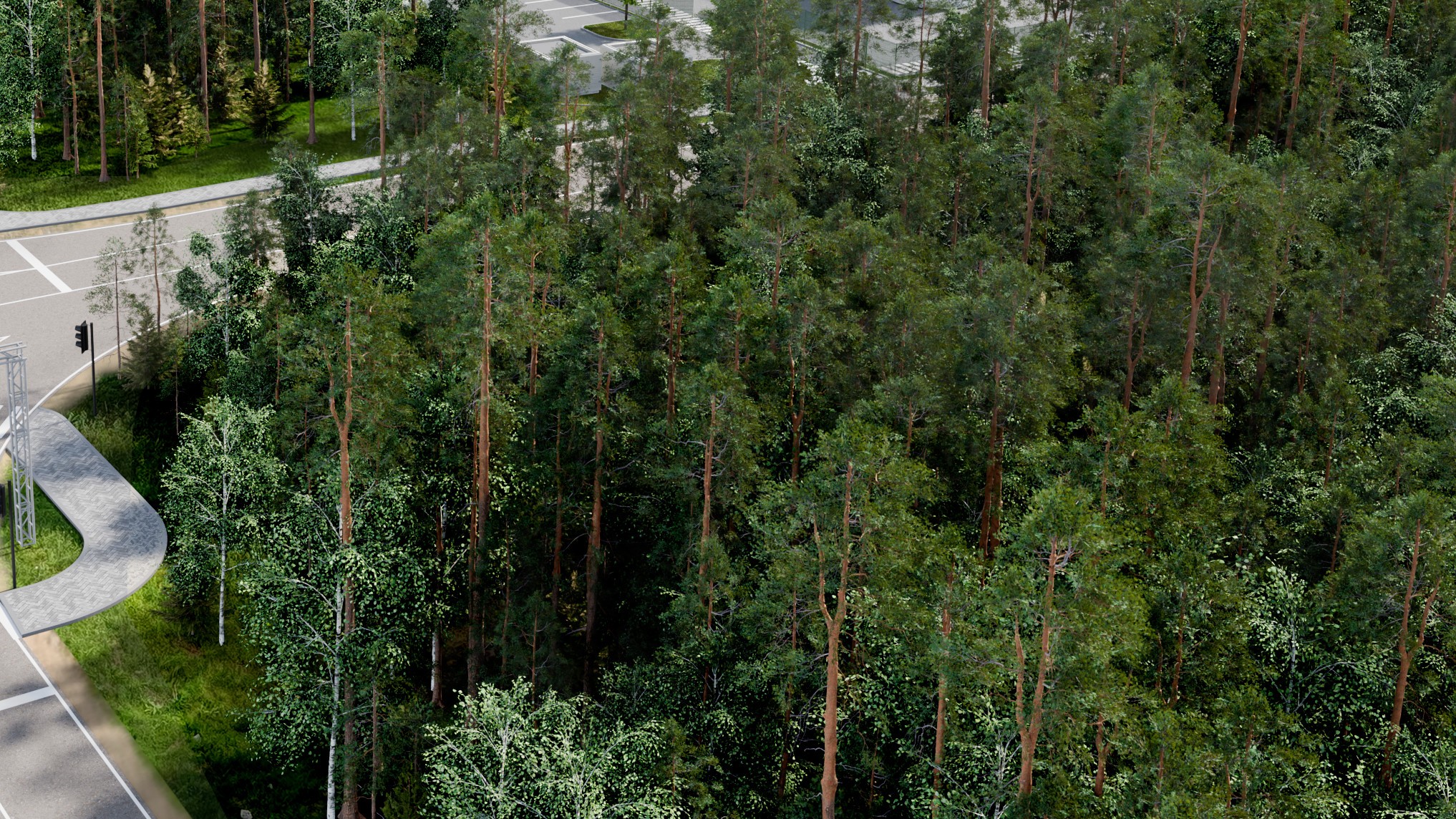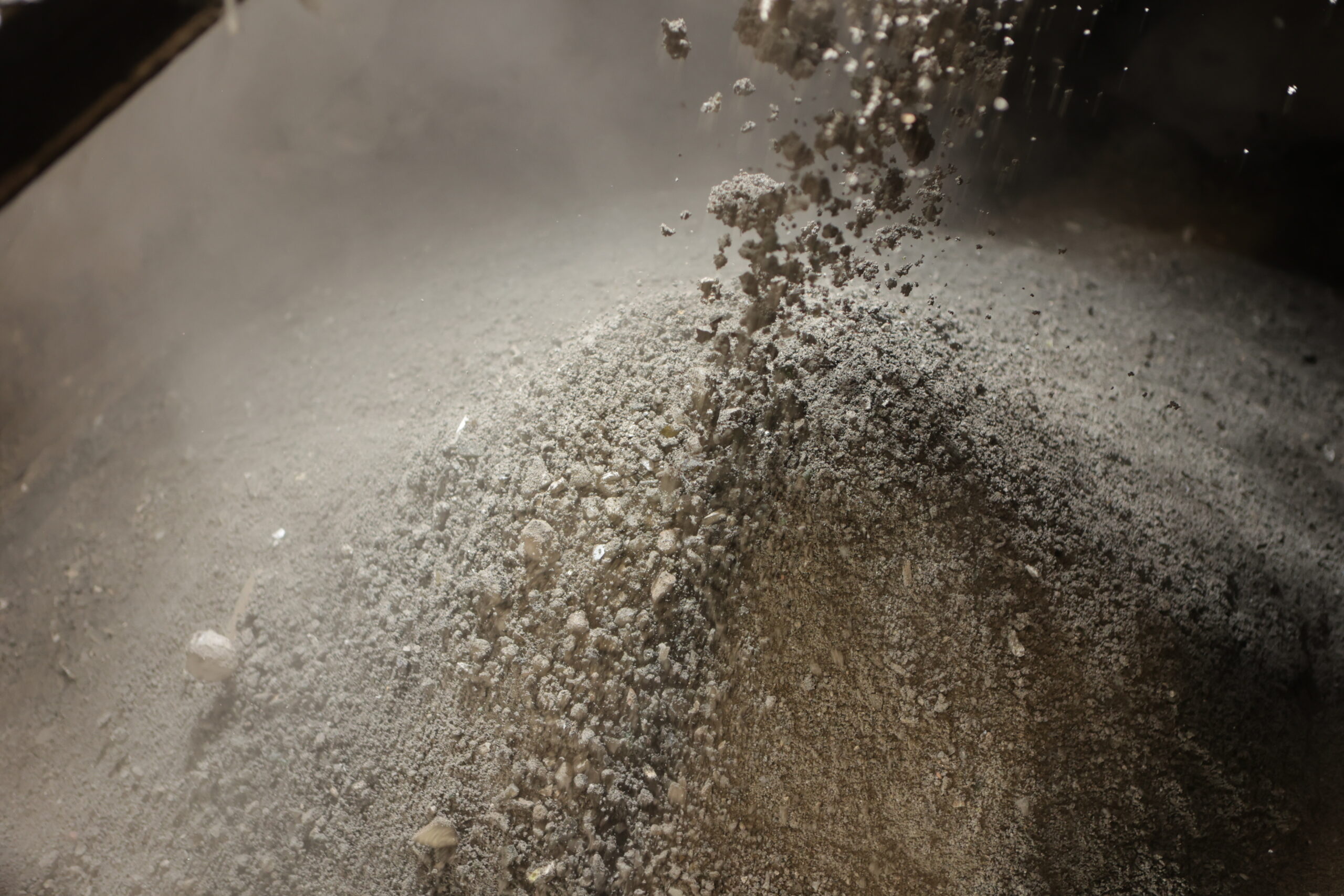Take our virtual tourExplore our Klaipeda waste-to-energy production plant. Ready? Let’s go.
Explore our Klaipeda waste-to-energy production plant. Ready? Let’s go.
Waste-to-energy is an environmentally friendly energy production method that helps keep waste out of landfills and prevents significant pollution.
Gren’s waste-to-energy CHP plants have become a leading example for the energy industry. Here, our people and processes are successfully managing waste and boosting efficiency.
In Kaunas and Klaipeda, Lithuania, we supply city district heating companies with heat energy from non-hazardous municipal and industrial waste and sell electricity via NordPool.
Gren’s combined heat and power plants provide a sustainable solution for heating and electricity and make waste management more sustainable – the waste goes into heat and power production, not landfills.
Waste incineration is a process that involves the combustion of solid waste materials, converting them into ash, gas, and heat while reducing their volume and weight. It can help solve the challenge of waste disposal, while contributing to sustainable energy production.
Waste incineration significantly reduces the volume of solid waste – by up to 90%. This removes the need for expansive landfill sites. Importantly, waste incineration can also generate energy in the form of heat and electricity. The combustion process releases thermal energy, which can be harnessed to produce steam and drive turbines, generating electricity. Modern waste incineration facilities have advanced technologies to control and minimise environmental impacts. These include emission control systems and energy recovery systems.
As well as being an innovative, sustainable approach to urban energy needs and waste management, the benefits of waste incineration can multiply when you connect waste incineration facilities to district heating systems. The recovered heat is put to good use, providing a reliable heat source for residential and commercial spaces, reducing dependency on traditional fossil fuels. This is a prime example of the circular economy in action.
Waste-to-energy plays a hygienic role by treating residual waste that can’t be prevented or recycled, taking responsibility for remaining waste streams produced by businesses and communities.
By treating the residues created from sorting and recycling activities, waste-to-energy plants act as a reliable sink for pollutants. This role will continue to grow as society increases its use of high quality recycling.
Waste-to-energy will remain relevant as a sanitary service. In the past, waste was burned as a means of dealing with infectious diseases. Some sanitary items cannot be reused or recycled, and it’s vital to ensure viruses are successfully destroyed.
While guaranteeing an ongoing, reliable sanitary service to communities and industries, waste-to-energy facilities also use the energy contained in residual waste to maximise energy generation, including the production of electricity, heating, and cooling.
Explore our Klaipeda waste-to-energy production plant. Ready? Let’s go.
Gren Klaipėda has successfully implemented a Digital Twin solution. This innovative technology enables a mathematical model of the waste-to-energy plant, allowing advanced data analysis, process optimization, and real-time decision-making.
Each year, the Gren Klaipėda plant processes non-recyclable waste to generate clean energy for homes and businesses. About 25% of this waste becomes bottom ash, which Gren prepares for reuse instead of disposal.



